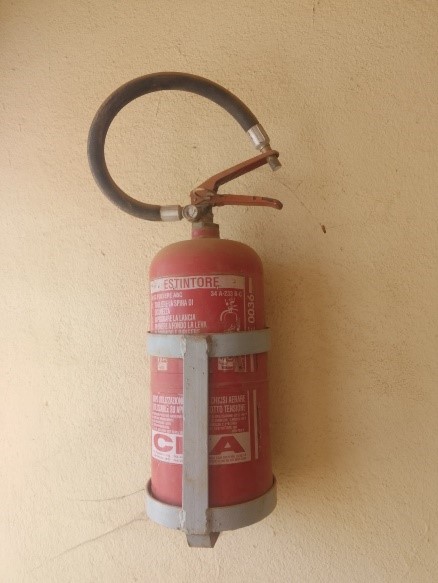Adamawa: These extinguishers gathering dust… and the fire risk that is growing

Abandoned and dusty fire extinguishers taken from a public administration in Ngaoundéré. © Photo credit © Jean Besane Mangam/Échos Santé.
Present in administrations, public and private companies, this security device is misused and sometimes abandoned to the elements and covered in cobwebs. In communities, its use is not well known to the population.
“When I enter an administration and other structures, I see this red bottle hanging on the wall that looks like a gas bottle, but I don’t know how to use it,” says Habiba, a resident of Ngaoundéré. This statement by the young student reflects the lack of knowledge of how to use this device used to put out fires. Like her, there are many users and even civil servants in private and public administrations who do not know how to use the fire extinguisher. “I don’t really have any knowledge of how to use this tool. I remember a time when the head of the Ngaoundéré fire brigade rescue center showed us what to do in the event of a fire in a building that has one,” fumes Koyabé, an employee in a private company in Ngaoundéré with a hint of regret at not having learned the expert’s lessons.
Important but neglected
Despite its importance in terms of actions to limit the spread of a fire that breaks out in a building, this safety device is sometimes forgotten and relegated to the background. If not properly cleaned and checked, some end up becoming a shelter for insects such as spiders that turn them into nests. Placed in various locations in the services, the extinguisher, according to safety experts, allows the fire to be stopped before it becomes a fire. “The extinguisher is a device containing an extinguishing agent (product with extinguishing properties) that can be projected and directed onto the fire under the action of internal pressure. It allows the start of a fire to be stopped in order to prevent it from becoming a fire” explains Amadou Mochame Moumemi, expert and consultant in fire safety, while making the alarming observation “Unfortunately not, this is an alarming observation in our environment. We call on administration managers and business leaders to provide fire safety training (knowledge and handling of fire extinguishers) to their employees and staff, because it is a regulatory requirement in terms of health and safety at work.” According to him, fire safety training is “governed by decree 039 of November 26, 1884, which stipulates in its article 128§2, “heads of establishments must ensure that workers in their service are instructed on the measures to be taken in the event of evacuation and adequately trained in the use of fire-fighting equipment.” In administrations, if the fire extinguisher is not ignored by department managers, it is still abandoned, even though it is recommended to check it every six months. “Fire extinguishers have a lifespan of 20 years and they must be checked every 6 months by an approved body or a trained person to ensure their operational readiness if necessary. This is a regulatory requirement. To say that they must be changed every 20 years,” recommends the expert.
To read also: National Blood Transfusion Center: Advocacy for adequate funding
Faced with increasingly recurring building fires and fires in cities, training in fire safety and especially in the use of fire extinguishers is of the utmost importance. This is likely to prevent the risk of fire in the event of a fire in a building or any other structure.
By Jean Besane Mangam















